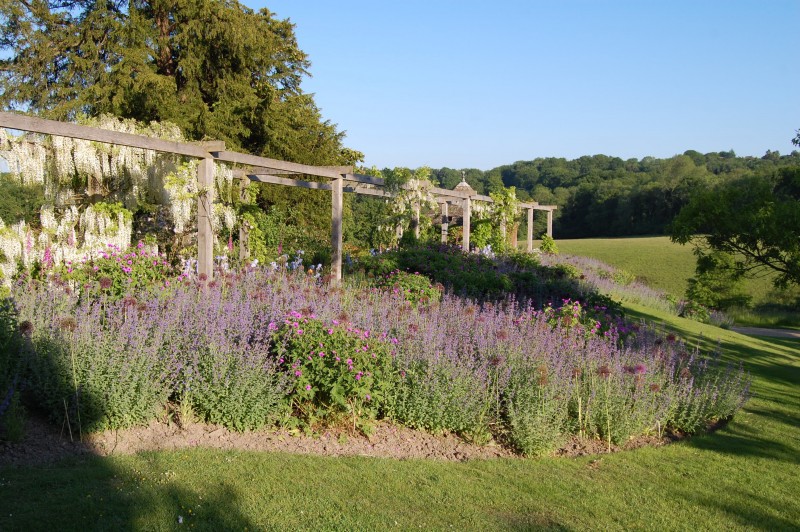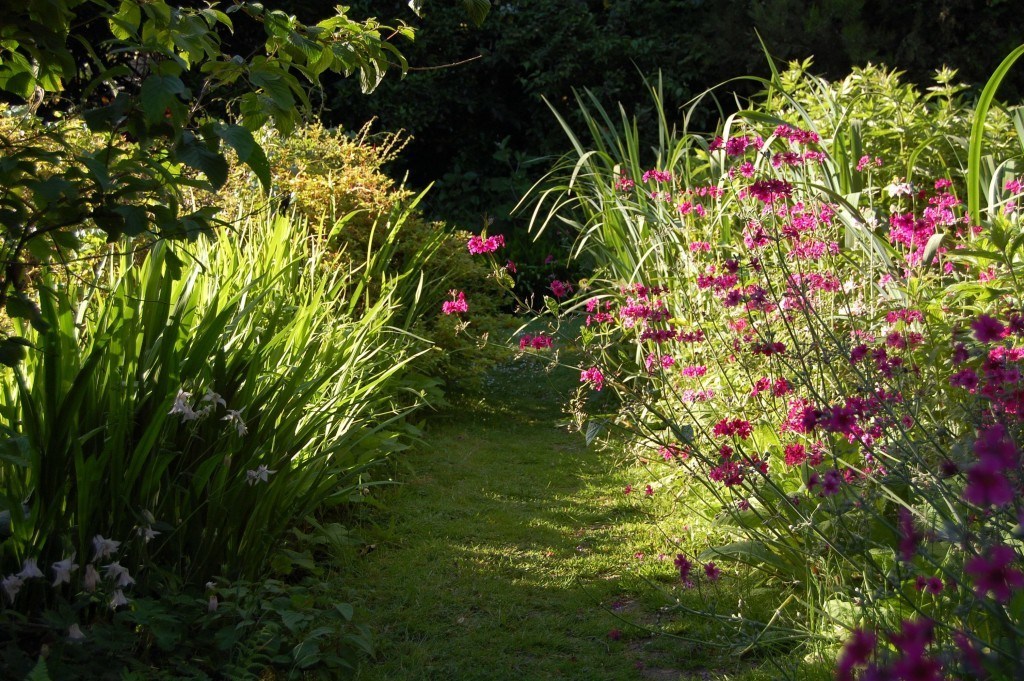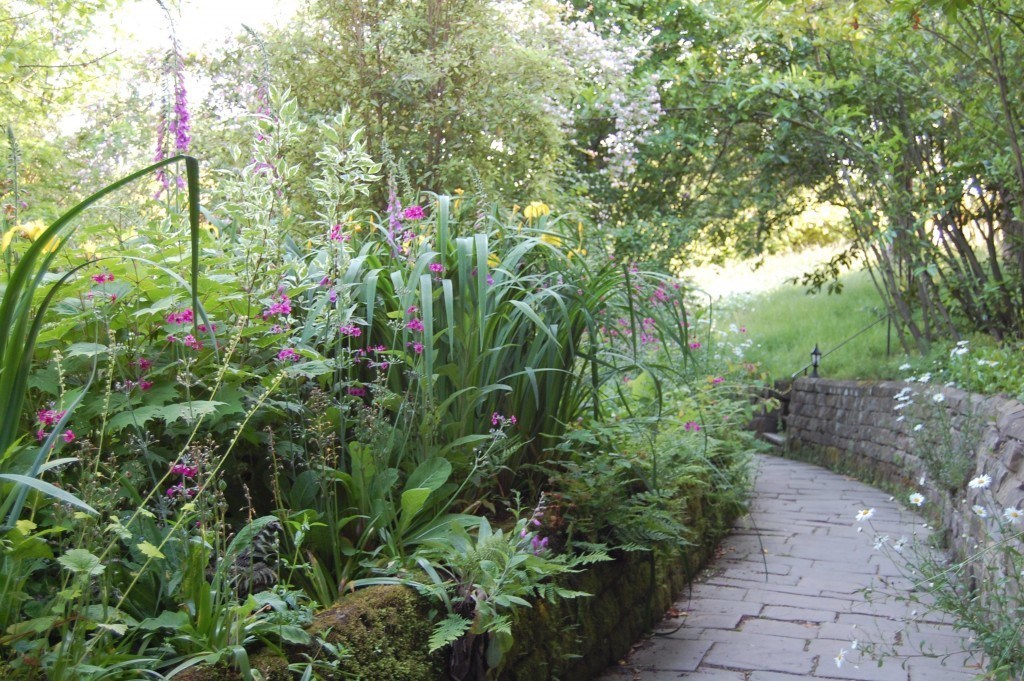ROBINSON’S MASTERPIECE: GRAVETYE MANOR
As winter finally sets in, I thought I’d distract you from the cold weather by taking you across the pond to gardens in lovely England. I plan to do a handful of blog posts on the exceptional gardens I visited last June, and I begin with the grounds of Gravetye Manor.
 In 1884, William Robinson began a decades-long journey to put his revolutionary landscape philosophy into practice at Gravetye Manor in England’s lush Sussex County. When he began his work, the vast grounds of the manor house, built in 1598 by Richard Infield, had been used primarily for livestock grazing. Vast woodlands made up much of the remainder of the estate.
In 1884, William Robinson began a decades-long journey to put his revolutionary landscape philosophy into practice at Gravetye Manor in England’s lush Sussex County. When he began his work, the vast grounds of the manor house, built in 1598 by Richard Infield, had been used primarily for livestock grazing. Vast woodlands made up much of the remainder of the estate.

Robinson, a prolific garden writer (The English Flower Garden is legendary), was a leader in the movement toward the Wild Garden (he wrote a ground-breaking book of the same name). He rebelled against the rigid formality of the Continental landscapes, writing, “the greatest and the most lasting improvement ever made in English gardens was the breaking away from the old idea of gardens of barrack-yard uniformity.”
After Robinson’s death, the Manor was neglected until hotelier Peter Herbert undertook a renovation of the house and garden in 1958, guided by Robinson’s meticulous writings about his work on the property in the book Gravetye Manor; Or Twenty Years’ Work Round an Old Manor House. Herbert transformed Gravetye Manor into a glorious country house hotel, restaurant and garden. After Herbert’s retirement in 2004, the property again fell into neglect until Jeremy Hosking bought the property in 2010. Hosking made the brilliant decision to hire Tom Coward, below, as Head Gardener. Tom came to Gravetye with extensive experience, including time at Great Dixter under Fergus Garrett.

I had the luck of running into Tom during his evening stroll through the garden. It is obviously a time that he and his dog Vera cherish. This delightful man told me that this was the time he could reflect on the progress and challenges of the garden, and contemplate plans for the days, months, and years ahead, As he continued on his daily rounds (below), I found myself envious of Vera, wishing I could tag along to soak up just a sliver of Tom’s knowledge.

What Tom and his team of dedicated and talented gardeners have done at Gravetye is jaw-dropping. Their mission is “not only to conserve and re-create Robinson’s work but also to progress the garden in homage to his experimental style of gardening.”.

In a break from the formal Renaissance era gardens in continental Europe, Robinson looked to the land to lead the design. He wrote, “a garden should grow out of its own site, if we are to have the best of it. One should think of the spot and what can best be done in it, instead of following set models.”Robinson’s formal layout adapted to Gravetye’s topography, transitioning to the rolling fields with a rustic arbor (recently rebuilt) and more loosely defined beds and plantings, below.

The arbor is draped in White Wisteria and underplanted with soft violet Bearded Iris.

Eschewing the practice of “bedding out” so popular at the time, Robinson instead sought to create planting schemes more in keeping with the patterns and groupings found in nature. He said, “Almost everything was planted in groups, varying the sizes and shapes, holding some apart and some together by turfing plants beneath and spaces of repose around, letting other groups merge one into another, suitable plants intermingling. This destroyed all set pattern to such an extent that it was impossible for the eye to take in the arrangement or contents of any single bed from one standpoint.

Robinson wrote, “before the English invented and carried out landscape gardening, the foreigner, like ourselves, was content with the mason’s idea of a garden.” By that, he meant, “so few plants that architects made gardens of stones and a few clipped trees with geometrical tracery.”

Don’t mistake Robinson’s disdain for the mason’s garden with a dislike for use of stone in the garden. Gravetye Manor is a testament to Robinson’s brilliance in using hardscape to shape and define a garden. The stone steps, above, illustrate his talent for blending the functional and the beautiful. Here he softened the formal layout of steps by using an informal style of masonry and his wild style of planting schemes.

Robinson was extremely critical of the Europeans’ treatment of plants as mere instruments to create barriers or define geometrical spaces or boundaries. He wrote, “having seen for many years the evils of disfiguring trees and shrubs by clipping . . . I naturally did not follow a plan so evil in its results. It is a common cause of hard and ugly lines in gardens, and usually so needless as well.”

After years of begging landscapers to leave their hedge trimmers in their trucks when working on my clients’ gardens, and requiring only hand pruning of shrubs, I was ecstatic when I read the following from the great gardener: “we abolished the shears and clipped no more. . the forming of dividing lines and shelters should be easy without the aid of the shears.” In the picture above, a beautiful barrier was created using Rhododendron, not a formal hedge with all life and personality sheared out of it. How much more beautiful the hedge is when the Rhodos are allowed to maintain their natural graceful shape!
 The meadows at Gravetye Manor are spectacular (above and below). Robinson was also a pioneer in replacing mowed turf with wild meadows, and in naturalizing bulbs. When I arrived, the spring bulbs had faded, and the summer wildflowers were in their glory.
The meadows at Gravetye Manor are spectacular (above and below). Robinson was also a pioneer in replacing mowed turf with wild meadows, and in naturalizing bulbs. When I arrived, the spring bulbs had faded, and the summer wildflowers were in their glory.

I may have missed the spring bulbs, but I’d say my walk along a carpet of Rhododendron petals more than made up for it. And that bark!

Enough discussion of this special place, its history and the immensely influential gardeners and patrons who have made it possible for the rest of us to enjoy. I leave you with a few more images to soak in until you, too, can walk the paths of Gravetye Manor’s gardens.










[custom-related-posts title=”Related Posts” none_text=”None found” order_by=”title” order=”ASC”]


Leave a Reply
Want to join the discussion?Feel free to contribute!